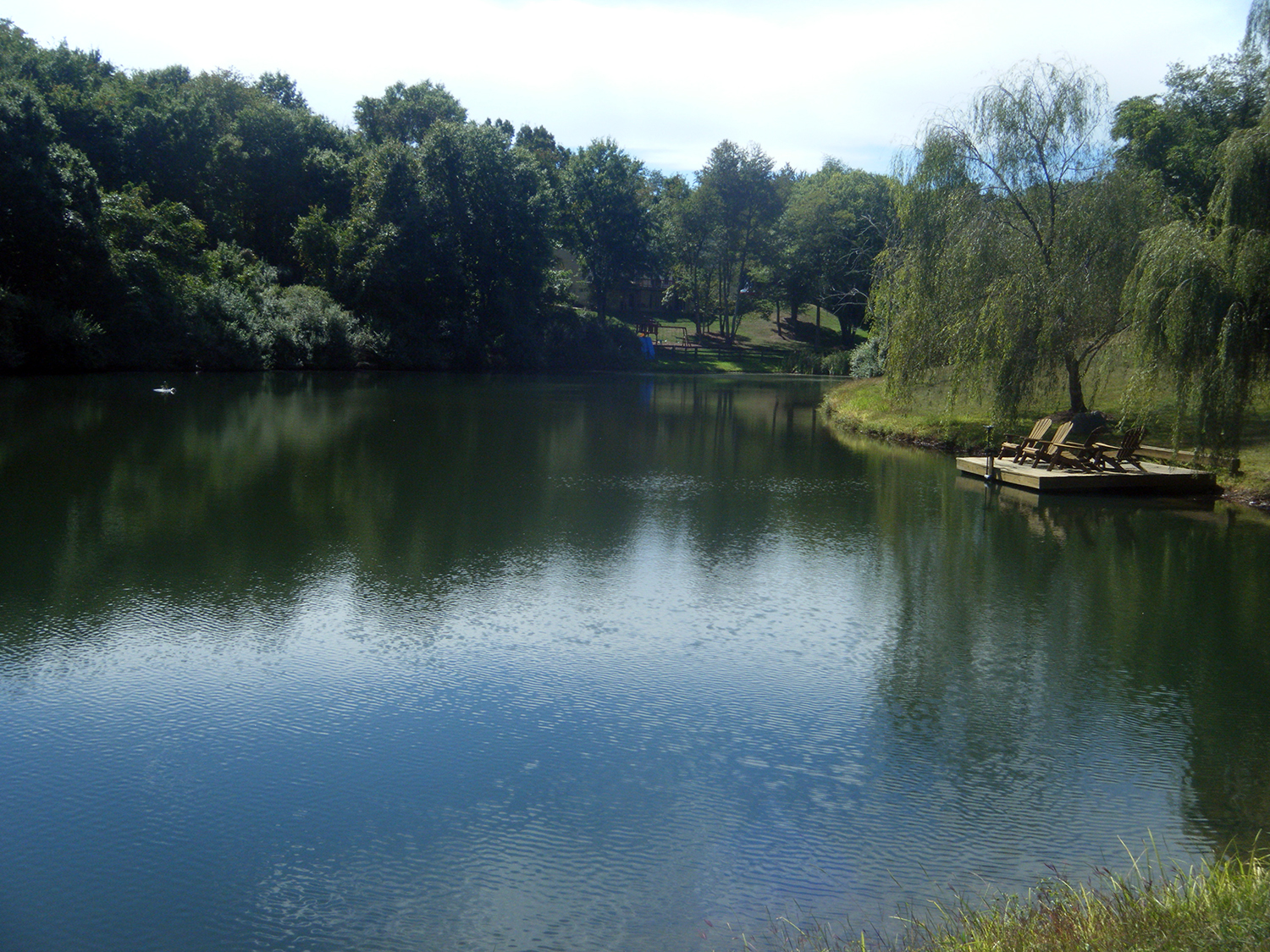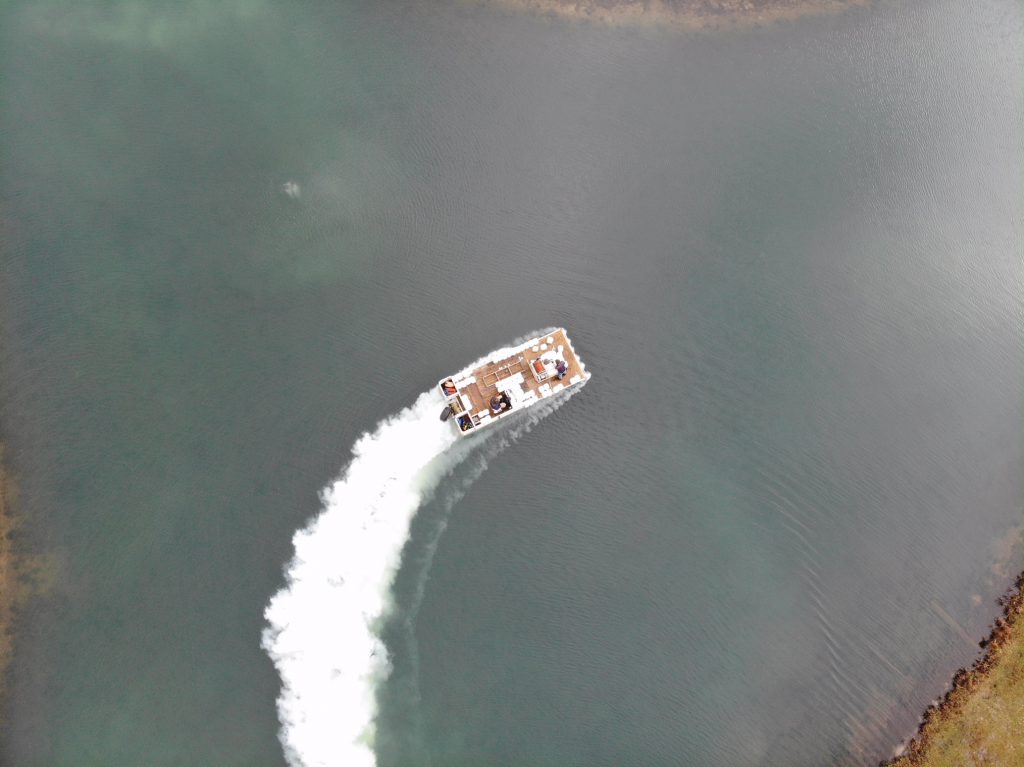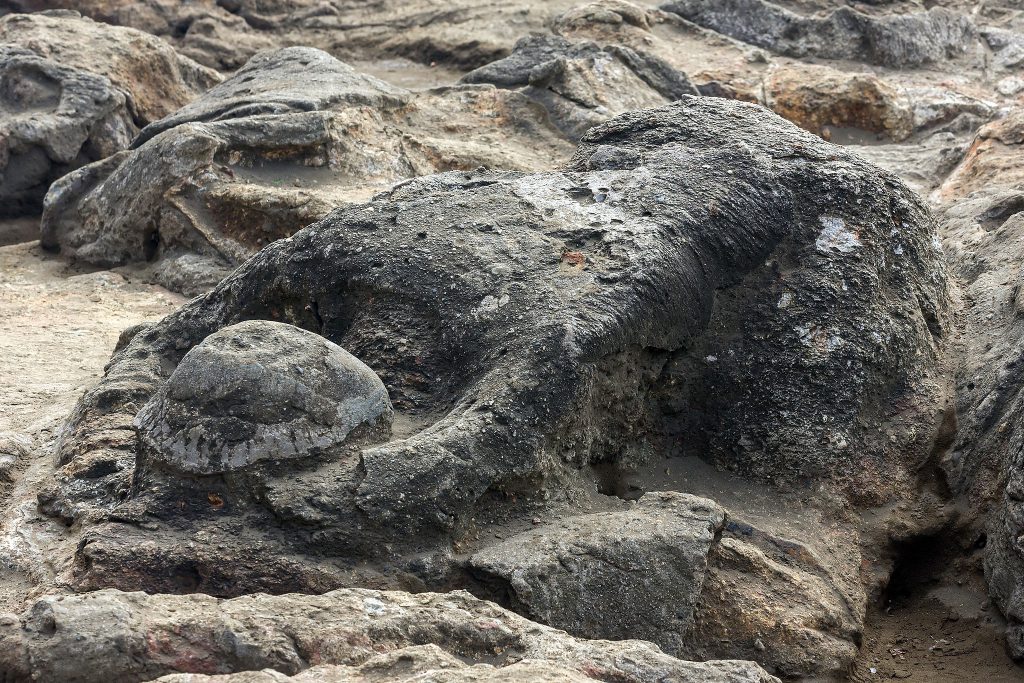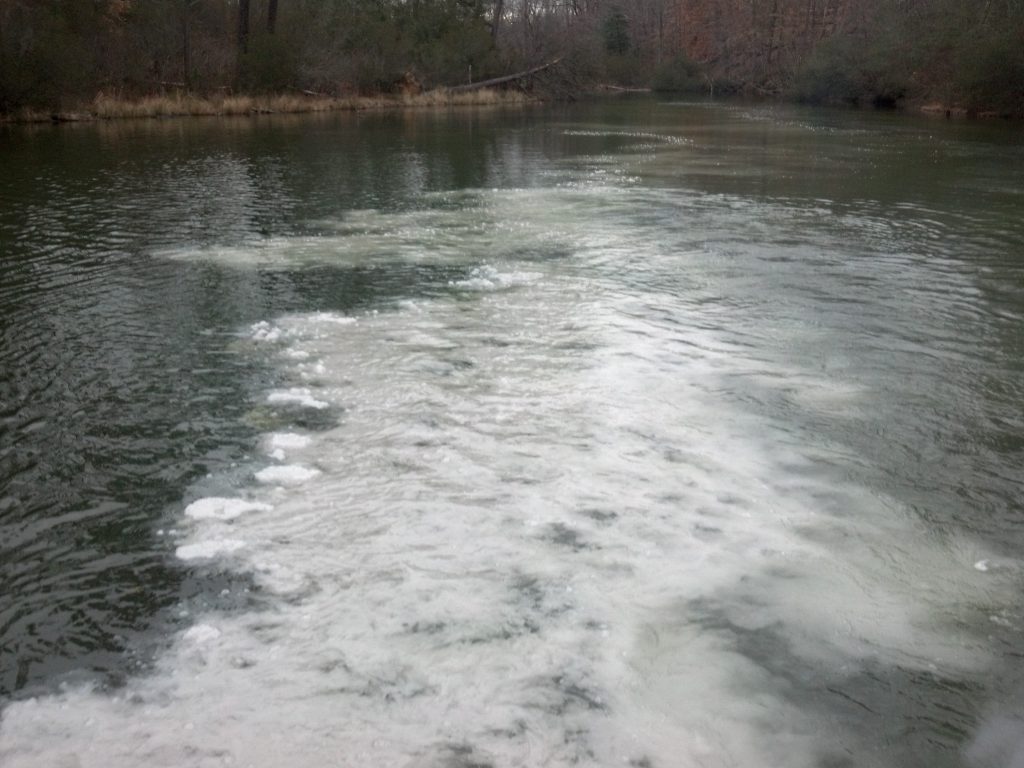
Pond Liming: Improve Water Quality and Cultivate a Productive Fishery
Have you ever suffered from heartburn, indigestion, or an upset stomach? Chances are, you took an antacid to reduce your symptoms. Seasonal liming can have the same effect on lakes and ponds that are suffering from acidic conditions. Acidic water conditions are reflected by a low pH, which is a water chemistry measurement. Just as heartburn is usually caused by eating specific foods, the pH of a particular ecosystem is directly affected by specific things in and around the water – soil type, fertilizers, decomposing leaves and grass clippings, trash, and other materials. The minerals naturally found in the surrounding soil have the largest effect on the pH of your water. Lakes and ponds that developed in the sand- or clay-based watersheds often struggle to maintain ideal pH levels due to the soil’s inherent acidity. This problem can occur anywhere in the US but is particularly prevalent in the south and southeastern regions of the country.

Limestone Is A Natural Sediment Effective At Neutralizing Pond Acid
Limestone is a naturally occurring material that is effective at neutralizing acids. Depending on the goals for your waterbody, it may be an excellent solution for the remediation of acidic waters. If you desire to cultivate a productive fishing pond or large trophy fish with a fertilization program, limestone applications should be considered if your alkalinity levels are below 50 parts per million (ppm), and certainly if your levels are below 20 ppm. Limestone works by strengthening the base of the food chain that supports healthy fisheries. By naturally balancing pH, liming helps minimize large swings in pH which are stressful on aquatic organisms. Liming also helps keep nutrients suspended in the water column where they can become available for consumption by beneficial phytoplankton. In turn, these microscopic plants are consumed by organisms all the way up the food chain. Over time, limestone applications can help establish a stronger, more efficient food chain and desirable fish populations.

Limestone Derives From Prehistoric Marine Life
Because limestone deposits are generally derived from skeletal remains of coral, shells, and prehistoric marine life, the soft rock contains significant levels of calcium. This means limestone can also be used for correcting water hardness. Water hardness refers to the total concentration of minerals in the water column and is extremely important for proper bone and scale development in fish and crustaceans. Fish can absorb calcium from the water in hard water but may become stressed in “softer” water that has a lower concentration of necessary minerals.
It’s important to note that liming is not a common recommendation for lakes and ponds used for recreational or aesthetic purposes.

Liming Plans & Treatments
Lime applications increase the available nutrients in the water column, which can increase aquatic plant and algae growth in addition to fueling the development of fish. In fisheries, the increased growth of native plants can be extremely beneficial by providing additional food sources as well natural fish cover, which supports the ratio of predators and prey. However, liming can be a valid solution for the reduction of certain plant species that thrive in acidic waters. Like any medication or supplement, utilizing the proper quantities and types of limestone is critical to the success of the application. Limestone comes in a couple of forms with different intentions for each, so it’s wise to meet with a professional first. A fisheries biologist will consider many factors before prescribing a liming plan, including pond size, water exchange rate, current goals, and other parameters.
Are You On Track To Meet Your Pond's Professional Goals & Aesthetics?
Is your waterbody on track to reach your goals? As we continue inching closer to the new year, it’s the perfect time to implement strategies that will position your lake, pond, or fishery for success next spring and summer. Whether you’ve limed before or are curious to find out more about the unique characteristics of your waterbody, your next move is as simple as a water quality test. Contact your lake management professional to get started.
Liming In ACTION
SOLitude Lake Management is a nationwide environmental firm committed to providing sustainable solutions that improve water quality, enhance beauty, preserve natural resources and reduce our environmental footprint. SOLitude’s team of aquatic resource management professionals specializes in the development and execution of customized lake, pond, wetland, and fisheries management programs that include water quality testing and restoration, nutrient remediation, algae, and aquatic weed control, installation and maintenance of fountains and aeration systems, bathymetry, shoreline erosion restoration, mechanical harvesting and hydro-raking, lake vegetation studies, biological assessments, habitat evaluations, and invasive species management. Services and educational resources are available to clients nationwide, including homeowners associations, multi-family and apartment communities, golf courses, commercial developments, ranches, private landowners, reservoirs, recreational and public lakes, municipalities, drinking water authorities, parks, and state and federal agencies. SOLitude Lake Management is a proud member of the Rentokil Steritech family of companies in North America









